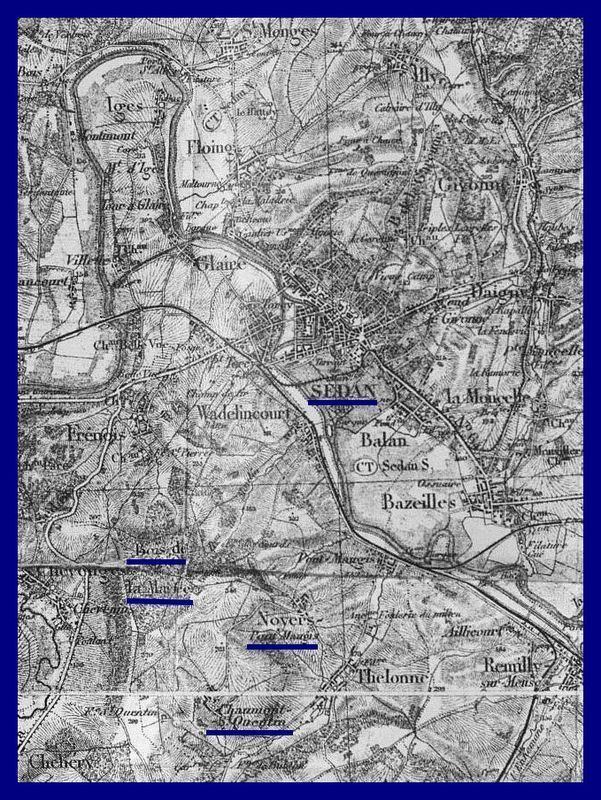7,500 killed, wounded or captured Nominal Result Imperial-Spanish victory | Date 6 July 1641 | |
 | ||
9,000 infantry, 3,000 cavalry 7,000 infantry, 2,500 cavalry Similar Battle of Les Avins, Battle of Honnecourt, Battle of Mingolsheim, Battle of Tornavento, Battle of Oldendorf | ||
Battle of la marf e
The Battle of La Marfée took place during Thirty Years' War near Sedan, France, on 6 July 1641, between a Royal army of Louis XIII under Marshall Gaspard III de Coligny, and French malcontents led by Prince Louis de Bourbon, Count of Soissons, and Duke Frédéric Maurice de La Tour d'Auvergne, duc de Bouillon, who were supported by an Imperial-Spanish army under general Guillaume de Lamboy sent from the Spanish Netherlands by the Cardinal-Infante Ferdinand of Austria. The French malcontents and the Habsburg forces dealt a serious defeat to the French Royal Army, and for a moment, Cardinal Richelieu feared that the rebels, supported by the Spanish forces, would advance on Paris. Shortly after, however, Soissons fell dead, either murdered by an assassin or killed by himself accidentally, and the rebellion vanished.
Contents
Background
Since 1636 prominent members of the French nobility had been plotting against Richelieu. While some of them fled to London and tried to gain support from King Charles I till the outbreak of the English Civil War, others fled to the Principality of Sedan, an independent state of the Holy Roman Empire, whose prince, Frédéric de la Tour d'Auvergne, welcomed French Protestants and other factions hostile to France and Cardinal Richelieu. He also took part in the "Princes de la paix" conspiracy with the comte de Soissons and Henri II de Guise, aiming to re-establish the privileges of the great feudal lords. In April 1641 Cardinal Richelieu and Louis XIII sent the Army of Champagne, under Gaspard III de Coligny, to put an end to his schemes.
As the Royal army moved to besiege Sedan, the rebels panicked and called for support the Habsburgs. Since 1640 Spain was struck by internal rebellions in Catalonia and Portugal, and the Count-Duke of Olivares, valido of Philip IV of Spain, looked at the French malcontents as "the sole means of salvation from the shipwreck". Therefore, the Cardinal-Infante Ferdinand, brother to the King and Governor of the Spanish Netherlands, agreed with Soissons and Bouillon to provide them with funds to pay their army and also to send troops in support. The agreement was settled in early June, and soon the malcontents were joined by 7,000 Imperial and Spanish soldiers led by Guillaume de Lamboy, who was regarded as incompetent –but not less than Coligny, the commander of the French Royal Army.
Course
The Imperial-Spanish army crossed the Meuse river at Bazeilles on 5 July across a pontoon bridge and joined the malcontents the next day at 9 pm in the plateau between the wood of La Marfée and the village of Chaumont. Lamboy was placed in charge of the infantry, Bouillon took the command of the cavalry, and Soissons of the reserve. Coligny led his troops out the French camp at Rémilly, on the left bank of the Meuse, and started a march to the plateau under the rain and across a wooded ground cut by ravines. An hour later, the French soldiers reached the battlefield wet and exhausted. The battle started at 11 pm with a brief artillery exchange. Then, Coligny took the initiative and ordered a cavalry charge against the malcontent's right, which barely held its ground. However, Lamboy managed to restore the order of his ranks and repelled the charge.
While Coligny was engaging the enemy infantry, Bouillon, who kept his cavalry hidden behind the heights, was awaiting for a signal from his squire Domerville, whom he had left in a hill nearby, to the right moment to charge against the French Royal forces. Half an hour from the beginning of the battle, Domerville made the signal, and then Bouillon charged upon Coligny's right flank. The French cavalry was thrown in disarray over the French infantry, which was broken and driven from the field in disorder. The malcontents and the Habsburg forces took 4,000 prisoners, including 400 officers, all the artillery and the baggage of Coligny's Royal army, many flags and a cash of 400,000 livres.
Aftermath
The Count of Soissons died at the end of the action in strange circumstances. He was either murdered by an assassin hired by Richelieu or killed himself accidentally when he raised the visor of his helmet with the barrel of his pistol. Had he been alive, the French defeat at La Marfée may have had catastrophic consequences for France, but without Soisson's leadership his supporters quickly abandoned his cause, and the possibility of Richelieu's fall disappeared. In June 1642 the revolt had been completely crushed. Bouillon only saved his life by converting from Calvinism to Catholicism and surrendering his duchy to France. Other plotters, such as the Marquis of Cinq-Mars, were executed, while others, like Gaston of Orléans, brother to the King, went into exile
From a military point of view, the French defeat at La Marfée meant the destruction of the Army of Champagne, which left the French army in Flanders under La Meilleraye in an unsustainable position, as Coligny's forces were supposed to operate in support after putting down the rebellion. La Meilleraye had seized the town of Aire-sur-la-Lys on 27 July, but in the following manoeuvres the Spanish army was able to retake Lillers and drove the French troops away from Aire and laid siege to the town. Coligny was replaced by Urbain de Maillé-Brézé, and what remained of his forces was amalgamated with a newly raised corps. In order to avoid to fall of Aire into Spanish hands, the French besieged and took Lens, La Bassée and Bapaume, but Aire was finally yielded on 7 December.
